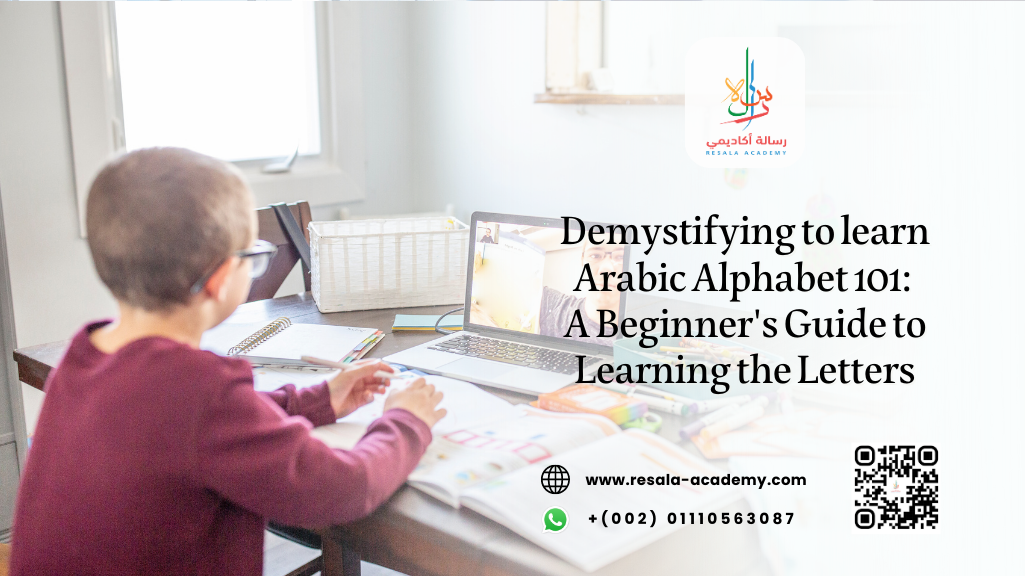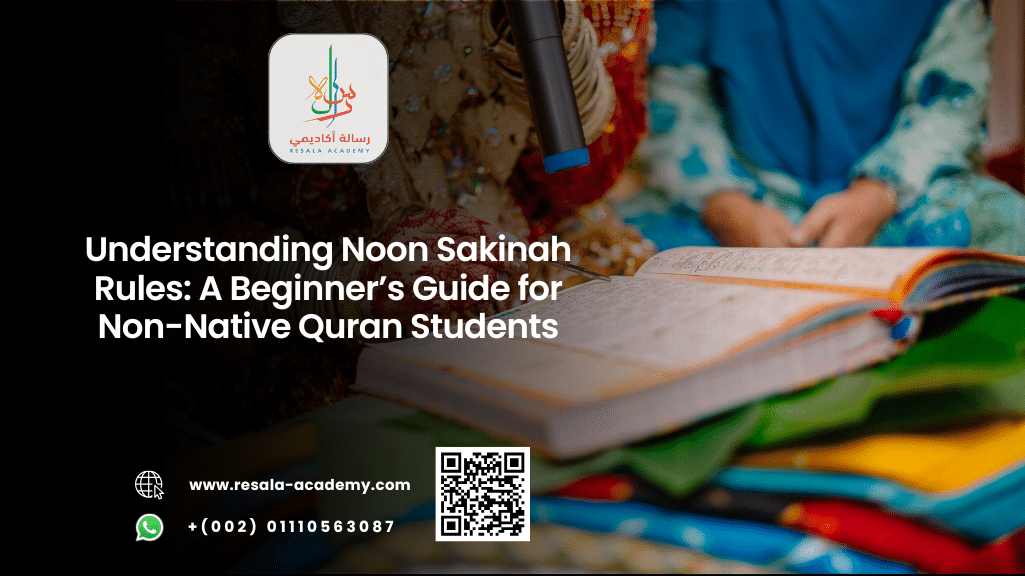Table of Contents
Demystifying to learn Arabic Alphabet 101: A Beginner's Guide to Learning the Letters
Salaam and welcome, language enthusiasts! Are you ready for a linguistic adventure that will transport you to the enchanting world of Arabic script? Today, we embark on an exciting journey as we demystify the captivating Arabic alphabet. Whether you’re fascinated by the rich history of this ancient writing system or eager to impress your friends with your newfound language skills, this beginner’s guide is your ticket to learn Arabic Alphabet.
The Arabic alphabet holds a certain allure – its graceful curves and intricate calligraphy have bewitched artists and scholars alike for centuries. But fret not! We are here to decipher its secrets, unveiling each letter’s unique form and function. From understanding isolated letters to unraveling diacritics’ role in shaping words, we’ll delve into every aspect necessary for mastering this stunning script.
So why is learning the Arabic alphabet so important? Well, consider it as opening doors – doors that lead not only towards fluency in one of the world’s most widely spoken languages but also towards connecting with millions across diverse cultures. As you grasp each letter’s nuances, you develop a deeper appreciation for Arabian heritage and pave the way toward understanding classical literature, sacred texts like Qur’an, and conversational exchanges brimming with vibrant expressions.
Intrigued yet? Great! Let us now venture forth into our exploration of what makes up this magnificent writing system: its components. Get ready to uncover both familiar shapes reminiscent of English characters along with some exotic surprises along the way!
History of the Arabic Alphabet
The history of the Arabic alphabet is a fascinating journey that takes us back over 1,400 years. It all began in the Arabian Peninsula, where tribes communicated through various scripts. But it was during the time of Prophet Muhammad (peace be upon him) that the Arabic script we know today started to emerge.
Initially, Arabic lacked vowels and diacritic marks, making it difficult to read and write. However, around the 7th century CE, an influential scholar named Abu al-Aswad al-Du’ali introduced vowel signs called “Harakat.” This innovation revolutionized written communication in Arabic and made learning much more accessible.
Over time, calligraphy played a significant role in shaping the aesthetics of Arabic letters. Beautifully designed manuscripts showcased not only linguistic mastery but also artistic prowess. Today, even though technological advancements have transformed how we communicate, understanding the historical context behind each letter can deepen our appreciation for this rich and ancient alphabet.
Are you ready to unravel more secrets about the fascinating world of Arabic letters? Let’s dive deeper into their components and explore their different forms!
Importance of Learning the Arabic Alphabet
Learning the Arabic alphabet may seem like a daunting task, but trust me, it’s worth every effort! So why is learning the Arabic alphabet so important? Well, for starters, it forms the foundation for mastering the Arabic language. Without a solid understanding of the alphabet, you’ll struggle to read and write in Arabic with fluency and accuracy.
By familiarizing yourself with the letters of the Arabic alphabet, you gain access to a whole new world of communication. You can read signs, menus, and even literature written in this beautiful language. Not only that but learning the Arabic alphabet also deepens your appreciation for Arab culture and heritage.
Moreover, mastering the basics of the Arabic alphabet opens doors to various opportunities. Whether you’re interested in pursuing a career in translation or interpretation or simply want to connect with native speakers on a meaningful level – knowing how to navigate this unique writing system will give you an edge.
So don’t be intimidated by those squiggly lines and curves! Embrace them as gateways into an enriching linguistic journey that promises personal growth and endless possibilities. Start today and unlock a world waiting to be discovered through learning the captivating Arabic alphabet!
Components of the Arabic Alphabet
The Arabic alphabet is a fascinating system with its unique components. Let’s dive into the different aspects that make up this beautiful script!
First, we have isolated letters. These are the standalone forms of each letter, without any connections to other letters. They serve as the foundation for creating words and sentences in Arabic.
Next, we explore start (initial) forms. When a letter appears at the beginning of a word, it takes on a slightly different shape compared to its isolated form. This change allows for smooth connections between letters when writing.
Moving on, we come across middle (medial) forms. As you might guess, these are the variations of letters when they appear in the middle of words. The shapes may differ from their initial or final forms but still maintain legibility within the context.
Understanding these components will give you a solid grasp of how each letter transforms depending on its position in a word – an essential skill for mastering Arabic calligraphy and handwriting!
Understanding Isolated Letters
When diving into the world of Arabic, one of the first things you’ll encounter is isolated letters. These are standalone characters that have distinct sounds and shapes. Each letter in the Arabic alphabet is written differently depending on its position within a word, whether it’s at the beginning, middle, or end.
In their isolated form, these letters showcase their beauty and uniqueness. They stand tall and proud on the page, waiting to be combined with other letters to create meaningful words and phrases. It’s like meeting each letter as an individual before they join forces to form a harmonious symphony.
Learning isolated letters is crucial for understanding Arabic because it lays the foundation for reading and writing fluency. By mastering these standalone characters, you’ll gain confidence in recognizing them regardless of where they appear within a word. So take your time getting acquainted with each letter in isolation – it will unlock countless possibilities for language exploration!
Exploring Start (Initial) Form
When it comes to learning the Arabic alphabet, one of the key aspects is understanding the different forms that each letter can take. And in this exciting journey, we’re going to explore the start (initial) form of the letters. So buckle up and get ready for a fascinating adventure!
In Arabic calligraphy, every letter has its unique shape when it appears at the beginning of a word. This initial form often looks quite distinct from its isolated or medical counterparts. It’s like meeting someone for the first time and being captivated by their charm and charisma.
So how do you recognize these initial forms? Well, they usually have an elongated tail or stroke on one side. This gives them an elegant touch and adds a sense of flow to your writing. Just imagine yourself creating beautiful words with fluid motions as you master these initial forms.
As you delve deeper into your exploration of the Arabic alphabet, be sure to pay close attention to the start (initial) forms of each letter. They are not just strokes on paper; they hold history, culture, and artistic beauty within them! So embrace this opportunity to dive into their world and let your pen glide gracefully across your notebook as you bring these magnificent letters to life!
Identifying Middle (Medial) Form
The middle (medial) form of Arabic letters is like the calm and composed friend in a group. It’s neither at the beginning nor the end, but holds its ground in the middle. This form is used when a letter appears between two other letters within a word. Just like our cool-headed friend, it adapts to fit its surroundings seamlessly.
When identifying the middle form, pay attention to how it connects with both the preceding and following letters. Some letters extend downward or upward while others have loops or curves that smoothly connect them. It’s all about maintaining harmony in writing!
Recognizing this unique shape may take some practice, but once you’ve got it down, reading Arabic texts becomes a breeze! So don’t get discouraged if it feels unfamiliar at first – embrace the beauty of mastering yet another aspect of this rich language!
Recognizing End (Final) Form
When it comes to the Arabic alphabet, each letter has its unique shape depending on where it appears in a word. One important form to understand is the end or final form. This occurs when a letter is at the end of a word or when it follows another letter.
In this form, certain letters may have additional strokes or loops that give them a distinct appearance. For example, take the letter “ب” which looks like “ـب” in its isolated and initial forms. However, in its final form, it transforms into a looped shape resembling “ـبَ”. Fascinating, isn’t it?
Being able to recognize these final forms is crucial for reading Arabic text accurately. It adds depth and beauty to your understanding of words and helps you comprehend texts more easily. So pay attention to those loops and curves – they hold the key!
Learn Arabic alphabet Chart and Single Vowel Marks
Ready to dive deeper into the fascinating world of Arabic? Hold on tight because we’re about to learn Arabic alphabet Chart and Single Vowel Marks!
The Arabic Alphabet Chart is like a treasure map that unlocks the mysteries of this ancient script. With 28 letters, it may seem overwhelming at first glance. But fear not! This chart will be your trusty guide as you embark on your journey toward mastering the Arabic alphabet.
But wait, there’s more! Single vowel marks are like little signposts in the desert, guiding you through words with precision. These diacritical marks indicate short vowels such as “a,” “i,” and “u.” They make reading easier for beginners by clarifying pronunciation and distinguishing between similar-looking letters.
So grab your pen and get ready to connect the dots between letters and sounds using the magnificent Arabic Alphabet Chart while making use of those handy single vowel marks along the way. Your adventure in learning Arabic has only just begun!
Overview of the Arabic Alphabet Chart
Ready to embark on your journey to learn Arabic alphabet? Well, get excited because we’re about to dive into the marvelous world of the Arabic Alphabet Chart! This chart is like a treasure map that will guide you through the maze of 28 letters. Each letter has its unique shape and sound, and with this chart, you’ll be able to unlock their secrets one by one.
The Arabic Alphabet Chart is designed in a logical order that allows learners to easily grasp and memorize each letter. Starting from right to left (remember, Arabic is written from right to left), it showcases both upper and lower case forms of every letter. Plus, it includes helpful mnemonic devices that make remembering each letter a breeze.
But wait! There’s more! The chart also provides examples of words starting with each corresponding letter. So not only will you become familiar with how each letter looks and sounds individually, but you’ll also see them in action within real words. It’s like having a personal tour guide leading you through the enchanting world of Arabian linguistics!
So grab your pens or open up your digital notepad because this chart will soon become an essential tool in your language-learning arsenal. With its clear structure and visual aids, mastering the Arabic alphabet has never been easier or more enjoyable than with this incredible resource at your fingertips! Let’s set sail on this linguistic adventure together – ahoy!
Significance of Single Vowel Marks
Have you ever wondered how to pronounce those tricky Arabic words correctly? Well, here’s the secret: single vowel marks! These little symbols play a significant role in helping you understand and pronounce Arabic words accurately. They are like magical keys that unlock the correct pronunciation of each word.
The beauty of these vowel marks lies in their simplicity. Just a few dots and dashes can make all the difference in how a word sounds. They indicate which vowels should be pronounced and where they occur within a word. By paying attention to these subtle markings, you’ll be able to navigate through the complexities of Arabic pronunciation with ease.
But why are single vowel marks so important? Well, without them, reading and speaking Arabic would be like trying to solve a puzzle with missing pieces. The absence of these markers would leave us guessing about the correct sounds for different words. Single vowel marks provide clarity and precision, making it easier for learners like you to grasp the intricacies of this beautiful language.
So next time you encounter an unfamiliar Arabic word, don’t overlook those tiny dots above or below its letters. Embrace their significance and let them guide you towards accurate pronunciation! With practice and patience, mastering these single vowel marks will open up a whole new world of linguistic possibilities for you!
Diacritics and Their Role in Arabic Writing
Diacritics may seem like tiny dots and dashes sprinkled over Arabic script, but they play a vital role in the world of Arabic writing. These little marks are not just decorative; they change the sound and meaning of words! Imagine a single dot above or below a letter transforming it from “b” to “t” or adding an “i” sound. Diacritics are like magical enhancers that guide pronunciation and ensure clarity in Arabic texts.
In Arabic writing, diacritics serve as helpful aids for beginners who are still getting accustomed to reading and pronouncing unfamiliar words. They act as signposts along the way, indicating how each letter should be pronounced correctly. Without these diacritical marks, deciphering some words can become quite challenging!
Moreover, diacritics also indicate vowel sounds within words – something that’s not explicitly represented by letters alone in written Arabic. By placing specific accents above or below certain letters, vowels such as “a,” “e,” or “o” can be added to otherwise purely consonantal text.
By understanding the role of diacritics and their impact on pronunciation and meaning, learners of Arabic can begin unraveling the complexity of this beautiful language one dot at a time! So embrace these seemingly insignificant marks – they hold immense power when it comes to mastering the art of reading and writing in Arabic.
Reading Arabic Texts: Tips and Tricks
Syllables and stress in Arabic can sometimes be a challenge for beginners, but fear not! Here are some tips to help you navigate the world of Arabic reading. First, remember that each word is made up of syllables, so break them down and pronounce each one. Pay attention to where the stress falls in a word as it can change the meaning entirely.
Next, avoid common mistakes by practicing regularly. Reading aloud will improve your pronunciation and help familiarize yourself with the different sounds in Arabic. Remember to take your time and read slowly at first until you gain confidence.
Utilize online resources like Resala Academy’s learning materials to enhance your reading skills. Their interactive lessons provide exercises that focus on reading comprehension and building vocabulary. With practice and dedication, you’ll soon find yourself comfortably navigating through all types of written Arabic texts!
Remember: practice makes perfect! So keep pushing forward, stay motivated, and soon enough you’ll be breezing through those Arabic texts with ease!
Syllables and Stress in Arabic
When it comes to understanding Arabic, mastering the syllables and stress is like finding the secret sauce to unlock its beauty. In this fascinating language, each word is made up of one or more syllables that combine to form a harmonious rhythm. It’s like a dance where every step counts!
In Arabic, stress falls on certain syllables within a word, giving it emphasis and creating a melodic flow. Unlike in English where stress can change the meaning of a word (think “record” versus “record”), in Arabic, stress is consistent within each word. So once you grasp this concept, you’ll be able to pronounce words with confidence.
To get familiar with the rhythm and stress patterns in Arabic words, pay attention to long vowels (like aa or ee) which often carry the main emphasis. Short vowels (like u or i) usually receive secondary emphasis. By listening carefully and practicing regularly, you’ll soon become attuned to the musicality of this captivating language.
So remember: when learning Arabic, embrace the power of syllables and let your tongue dance along its mesmerizing beats!
How to Avoid Common Mistakes while Reading Arabic
Reading Arabic can be a daunting task, especially for beginners. But fear not! With a little practice and some handy tips, you can avoid common mistakes and become proficient in reading this beautiful language.
It’s essential to take your time when reading Arabic texts. Don’t rush through the words or skip over diacritics (those small marks that indicate vowel sounds). Pay attention to every letter and diacritic to ensure accurate pronunciation.
Familiarize yourself with the rules of joining letters in Arabic script. Some letters change their form depending on whether they appear at the beginning, middle, or end of a word. Practice identifying these different forms so you don’t confuse one letter for another.
Remember that Arabic is read from right to left. This reversal may initially feel strange but try not to let it trip you up. Take your time to adjust and focus on improving your reading skills gradually.
By following these tips and practicing regularly, you’ll soon find yourself becoming more comfortable with reading Arabic texts. Embrace the learning process and enjoy discovering the beauty of this ancient language!
Learning the Arabic Alphabet Online with Resala Academy
Are you ready to embark on an exciting journey of learning the Arabic alphabet? Look no further than Resala Academy, your ultimate destination for mastering this beautiful language online. With its user-friendly platform and expert instructors, Resala Academy offers a comprehensive program that caters to beginners and advanced learners alike.
At Resala Academy, you’ll have access to interactive lessons that focus on each letter of the Arabic alphabet. Through engaging videos and exercises, you’ll learn how to recognize isolated letters, identify their various forms (initial, medial, and final), and understand diacritics. The academy’s step-by-step approach ensures that you grasp the fundamentals before moving on to more complex concepts.
One of the standout features of Resala Academy is its personalized learning experience. Their experienced teachers are dedicated to providing individual attention and feedback throughout your journey. Whether you prefer one-on-one sessions or group classes with fellow learners from around the world, Resala Academy has flexible options suited to your needs.
Start your Arabic alphabet adventure today with Resala Academy! Get ready to unlock a whole new world as you discover the beauty of this ancient script while gaining valuable communication skills in one of the most widely spoken languages in the world. Join thousands of satisfied students who have successfully learned Arabic with ease through Resala Academy’s innovative online platform!
FAQs
1. Is it difficult to learn the Arabic alphabet?
Learning any new writing system can be a challenge, but with dedication and practice, anyone can master the Arabic alphabet. It may seem intimidating at first, but remember that millions of people around the world have successfully learned it. With the right resources and guidance, you’ll be on your way to reading and writing in Arabic in no time!
2. How long does it take to learn the Arabic alphabet?
The time required to become proficient in the Arabic alphabet varies from person to person. Some learners may grasp it quickly within weeks or months, while others may take longer depending on their level of commitment and available study time. The key is consistency and regular practice. By dedicating a few minutes each day to practicing letter recognition and forming words, you’ll steadily progress toward fluency.
3. Can I learn the Arabic alphabet online?
Absolutely! Online platforms like Resala Academy offer comprehensive courses specifically designed for beginners who want to learn the Arabic alphabet from scratch or improve their existing skills. These courses provide interactive lessons, pronunciation guides, quizzes, and valuable feedback from experienced tutors—all accessible from anywhere with an internet connection.
Remember: Learning a new language takes time and effort; don’t get discouraged if progress feels slow at times. Stay motivated by setting achievable goals along your journey toward mastering the fascinating world of Arab culture through its unique script—the mesmerizing Arabic alphabet!
Conclusion
Congratulations! You have now embarked on an exciting journey to demystify the Arabic alphabet. By understanding its history, components, and the role of diacritics, you are well-equipped to begin your adventure into this beautiful language. Learning the Arabic alphabet may seem daunting at first, but with dedication and practice, you will soon be able to read and write in Arabic confidently. Remember to take advantage of online resources like Resala Academy for a structured and comprehensive learning experience. As you dive into reading Arabic texts, keep in mind the importance of syllables and stress patterns. Be mindful of common mistakes and stay patient with yourself as you navigate through this new terrain. Learning a new alphabet is not just about gaining practical skills; it also opens up a world of cultural understanding and connection. Embrace the beauty of written Arabic as you embark on this linguistic journey. So what are you waiting for? Start exploring the fascinating world of Arabic letters today! With perseverance and passion, there’s no limit to what you can achieve. Happy learning!




